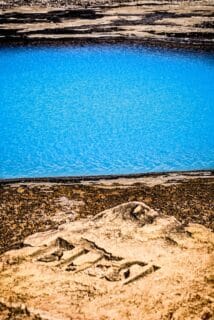Iceland is geysers’ homeland: not only it is the country with the highest geysers-surface rate, but the the word itself comes from the Icelandic geysir which means “to gush”.
Geysers are a special kind of hot spring erupting in a column of water and vapour at more or less regular intervals. They are close ti volcanos or where the earth crust is thinner. It is quite a rare phenomenon, since it needs a combination of geological and physical traits that are only to bee seen in few locations.
In Iceland there are about thirty geysers and most of them are in the south-western corner of the island. Here is also to be found Geysir, the forefather of all geysers in the world. It was bishop Sveinsson who choose the name in 1647. In 1846, German scientist Robert Bunsen studied more closely Geysir’s characteristics and theorized how it works in the way it is still widely accepted. Since then, its name’s corrupted form geyser became the term for all similar phenomenons.
Geysir is not working anymore with regularity, but in the past it used to give off a sixty-meter stream of hot water and vapour every hour. Today it only wakes up after a strong earthquake and gushes without regularity. Instead its little brother, Strokkur, located about at a 400 metres lower altitude, is still precise as a clockwork: about every eight minutes it gives off water column up to twenty metres.
The best way to enjoy such e show is to stand at a fair distance, beyond the crowd. The stream gets slowly higher, reaching the crater and forming a sound shaped pound. You can see the vapour going though it and squirting high in the air, losing thin particles of hot water around, so you better watch where the wind is blowing!
The landscape framing the geysers is unreal: yellow and red rocks, painted by the minerals in the water, and more whitish and blueish pounds of sulphurous hot water. On the background, a green valley, mostly grazing land. In the air, the sulphurous breath of Earth.










